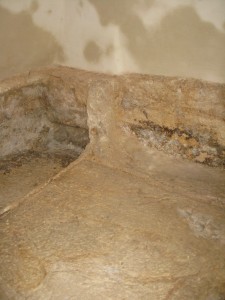by Richard D. Draper and Michael D. Rhodes
This post is adapted from the BYU New Testament Commentary on 1 Corinthians, forthcoming.
The history of the resurrection is told in the Gospels; the doctrine, however, is not. It is to Peter and Paul that we must turn for that. Here we will focus on insights from Paul.
The Apostle taught that in the resurrection the body is sown (that is, goes into the grave) sōma psychikon, “a natural body,” but raised (that is, resurrected) sōma pneumaticon, “a spiritual body” (1 Cor. 15:44). By the former term, Paul means a mortal body, by the later, an immortal one. But what is the difference between a “natural” and a “spiritual” body? Earlier in this same epistle, Paul uses these same two adjectives to describe a human being. He explains that psychikos anthrōpos, a “natural human being,” is one that receives the spirit of the world (1 Cor. 2:12) but does not receive the things of the spirit of God (1 Cor. 2:14). On the other hand, a pneumatikos, a “spiritual” human being, is one that does receive the spirit of God (1 Cor. 2:14) and, through the spirit, is able to discern all things (1 Cor. 2:15). Thus a spiritual body is a body that is filled with the spirit of God, whereas a natural body is one that lacks that communion with the spirit. Paul shows that the resurrected bodies of the righteous are spirit-filled.
In some Christian religions, it is taught that a spiritual body has no physical component. It is important to note, however, that in neither of these two divisions—sōma psychikon and sōma pneumaticon—is there any hint in the minds of either Paul or his readers that he is referring to of some kind of disembodied spirit. The tension in the resurrection is not between physical and spirit bodies but between the natural and spiritual ones. Paul affirms that a sōma psychikon is a living mortal human being and that includes a physical body, but one bound by natural conditions. He also affirms that a sōma pneumatikon is a living immortal human being, including a corporeal body, but one expanded by heavenly conditions. A sōma pneumatikon is an immortal physical body controlled and directed by God and endowed with the power of the Holy Spirit.
It needs to be stressed that the resurrected body is, however, much more than physical but not less than that. It transcends earthly and mortal limitations. The resurrection purifies and expands all its capabilities, powers, and endowments. Joseph Smith observed that “the nearer a man approaches perfection, the clearer are his views, and the greater his enjoyment, till he has overcome the evils of his life and lost every desire for sin.” He went on to note that “this is a station to which no man ever arrived in a moment” (Teaching of the Prophet Joseph Smith, 51; Evening and Morning Star, Feb. 1834, 135). Even so, it must not be overlooked that a righteous man or woman never loses their desires, neither those of the spirit nor those of the body. Instead they increase in them, but these desires are holy, pure, and completely under their control and can, therefore, be enjoyed in an eternal fullness.


